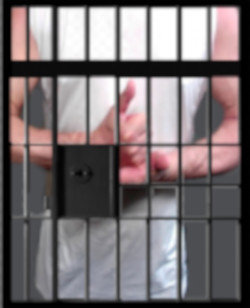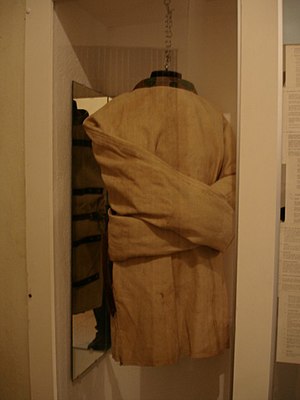 By BitcoDavid
By BitcoDavid
I’ve been swamped and working hard on getting caught up on videos and other projects, which I know you’ve been waiting for. Trust me, they’re coming. But I wanted to get a post up here, which will bring you up to speed on some of what’s going on within the prison system.
On November 10th, the New York Times reported on the Second Chance Act.
The act, aimed at helping states and localities reduce recidivism, encourages changes like those that have already taken place in Kansas, Texas and Oregon. The states have expanded community-based drug treatment programs, improved postprison supervision and retooled parole systems that once shunted people back to jail not for actual crimes but for technical violations that are more cheaply and effectively dealt with through community-based sanctions like house arrest or mandatory drug treatment.
Still, states that want to cut recidivism rates deeply and permanently must also rethink thousands of laws and regulations that punish ex-offenders after they leave jail by denying them jobs, homes and basic credentials like drivers’ licenses.
And of course, obvious in its omission is the denial of voting rights to former felons. I was always led to believe that once you paid your debt to society, you’re square with the house again. In many states, that’s no longer the case. Your mistakes and missteps follow you for life.
The Department of Housing and Urban Development, for example, has urged public housing agencies not to adopt blanket policies of excluding prospective tenants with conviction records and to take other factors, including a family’s willingness to participate in counseling programs, into account.
And last spring, the Equal Employment Opportunity Commission reinforced and clarified an old policy barring employers from automatically denying employment to people based on arrest or conviction records. The employer must consider the seriousness of the offense, the time that has passed since conviction and the relevance of the crime to the job in question.
One unfinished piece of business for Washington is to regulate the job-screening companies that routinely make disastrous errors when reporting criminal background information on job applicants.
***
I just can’t get enough of Prisonmovement’s Weblog. On November 11th, they posted a Los Angeles Times article on the impact of the notorious and wrong headed Three Strikes Law.

Inmates prepare to leave for dinner in Facility B at the California State Prison-Lancaster, on June 10, 2010. 200 inmates are housed in cells (top) and due to overcrowding another 40 inmates sleep in bunks on the day room area (floor). There are approximately 4600 prisoners currently in this state prison which normally houses 2300 inmates. A legal battle over who gets to control California’s massive spending on prison – judges or corrections officials – may be headed to the U.S. Supreme Court with overcrowding at the state’s 33 prisons at the center of the debate.
Image Courtesy of PrisonMovement’s Weblog
Is California’s costly tough-on-crime era over? That’s perhaps too optimistic a conclusion to draw from Tuesday’s election results. In passing Proposition 36, voters curbed some of the excesses of the state’s three-strikes law, but they also rejected a measure to roll back the death penalty and adopted one — Proposition 35 — that broadens the sex offender registry and imposes new life terms for some human trafficking offenses. The state has ceased its relentless march down a road toward ever-tougher sanctions, ever-more-crowded prisons and ever-rising costs. It has not turned the corner, but it’s peering around it, trying to get a sense of whether it’s safe to proceed.
Readers of DeafInPrison.com already know that California has the worst prison overcrowding problem of any of the 50 states. But we also know that all of the states are literally suffocating, in ever increasing prison populations.
For the last two decades California voters have listened too often to their fear when going to the polls, so it’s important to remember that in previous years, initiatives generally steered clear of crime and punishment. Voters adopted a host of prison construction bonds in the 1980s and approved a victim’s bill of rights in 1982, but it wasn’t until 1990′s Proposition 115 that an initiative cut back severely on the procedural rights of criminal defendants. There followed a series of measures that fed on the cynical politics of crime. Voters expanded the range of offenses subject to the death penalty. In 1994, even after crime rates began their historic decline, voters adopted the three-strikes law. In 2000, they approved Proposition 21, a measure to revoke many of the state’s landmark protections for juvenile offenders as young as 14. In 2006, they turned their attention to sex offenders with Jessica’s Law, and in 2008, on the heels of a decade-long crime drop of 20%, they adopted a new victim’s bill of rights and virtually eliminated parole for many offenders with Marsy’s Law.
They finished with a link to the actual L.A. Times article.
http://www.latimes.com/news/opinion/editorials/la-ed-1111-tough-on-crime-20121110,0,4241285.story
But I’m sure you’d much rather see it in Prisonmovement’s Weblog.
http://prisonmovement.wordpress.com/2012/11/11/crime-and-punishment-in-california/
***
Here’s an amazing story by Massachusetts Newswire.
http://massachusettsnewswire.com/2012/11/12/MNW5801_075603.php
Joe Baker, a Tennessee inmate, has been incarcerated for 24+ years. With the help of his family, Joe has developed a website where offenders can apologize to their victims online in a non-intrusive way. In his quest to make amends for his crime, Joe created the website The Apology Project (www.theapologyproject.com) and continues to give back for his wrongdoing and encourages other inmates to do the same.
Offenders can post their apology on the website, and victims have the ability to read the apology and offer a response if they so choose.
This feels very much to me like the South African Truth and Reconciliation Commission, where the idea was atonement and forgiveness, not revenge and punishment. Obviously, this kind of thing is more symbolic than practical, but its definitely got some interesting potential. We’ve learned that tough on crime policies are ineffective – maybe something like this can offer a path to getting America off the #1 spot as the World’s jailer.
Joe is an inspiration in showing that inmates can change. They do not have to continue to be what they were once convicted of and continue to live a life of crime. He is proof that you can become part of the solution, instead of continuing to be part of the problem. Society should be interested in this, because it displays there can be true change in the world, no matter who you are or what your circumstance. That is what we ALL strive for, and we as a society, need to recognize that we must be proactive in the rehabilitation of inmates if we ever want to see true change.
http://massachusettsnewswire.com/2012/11/12/MNW5801_075603.php
***
And finally, in the strange bedfellows department, comes this from the WaPo.
Traditionally, prison reform has been a liberal issue, associated with civil rights activists troubled by the extreme racial disparities in the U.S. criminal justice system, and with drug decriminalization advocates who emphasize the high cost of drug prohibition. But without much notice, that picture has begun to change. These days, the right is leading the charge to reduce the U.S. prison population.
Yes, you read that right. The overstuffed prisons are becoming so problematic, that even the Religious Right sees the need for reform.
Instead, the change has come about due to an alliance between libertarians, who are as skeptical of the prison system as they are of all uses of state power, and religious conservatives. The latter group was brought into the fold because of two activists who served time in prison: Charles Colson, a former Nixon aide convicted for his role in Watergate, and Pat Nolan, a former Republican legislator in California who was put away on corruption charges.
The two headed up Prison Fellowship, an evangelical group that works with prisoners, and Nolan in particular ran its policy arm. In the mid to late 1990s, they began to put together a conservative coalition in support of reforms. It wasn’t long before big players like Grover Norquist and direct-mail magnate Richard Viguerie joined in the discussions.
Here – so you’ll know I’m not lying – is the link.
BitcoDavid is a blogger and a blog site consultant. In former lives, he was an audio engineer, a videographer, a teacher – even a cab driver. He is an avid health and fitness enthusiast and a Pro/Am boxer. He has spent years working with diet and exercise to combat obesity and obesity related illness.
Related articles
- Crime and punishment in California (prisonmovement.wordpress.com)
- How California’s Three-Strikes Law Struck Out (slate.com)
- Proposition 36 on three strikes law passes, AP says (latimesblogs.latimes.com)
- Jailinmate.com Shares Changes in the Three Strikes Law for California Prison System (virtual-strategy.com)
- Prop. 36, Reform Of ‘Three Strikes’ Law, Leads Early (sanfrancisco.cbslocal.com)
- California Voters Scrap Draconian “Three Strikes” Law (alternet.org)
- Proposition 36 promises an end to California’s punitive three strikes law (prisonmovement.wordpress.com)
- How Prisoners Make Us Look Good – From the NYT (deafinprison.wordpress.com)
- Overcrowded Prisons – a Photo Essay from Mail Online (deafinprison.wordpress.com)
- The U.S. Justice System’s Role in Reducing Recidivism (inmatevoice.wordpress.com)




